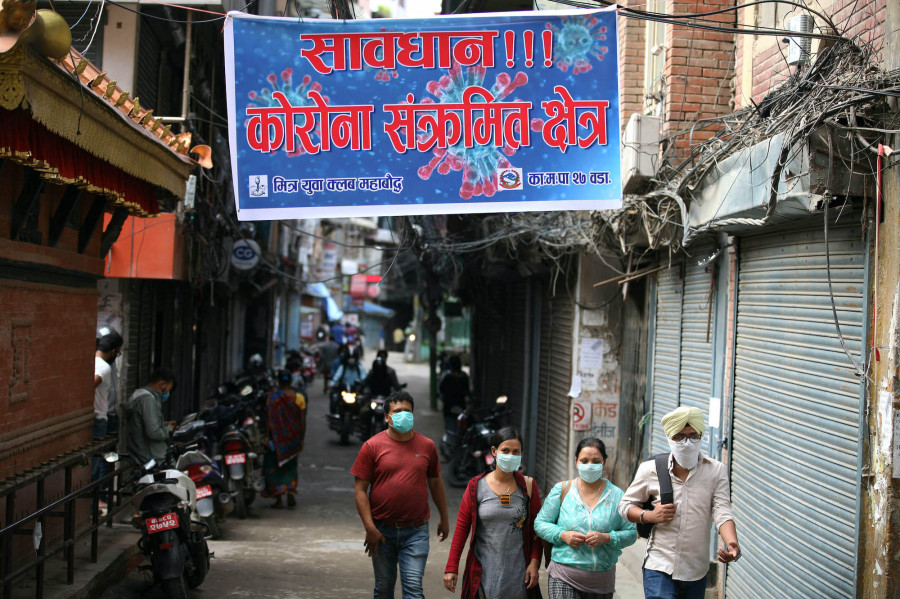Editorial
Let the data sink in
Our approach to dealing with the pandemic needs an overhaul.
Nepal has recorded 12 new deaths and 1,120 new cases in the last 24 hours. In the last 43 days alone, since the government 'lifted the lockdown' on July 21, the country has seen 211 deaths and 23,655 cases. But the regime, it seems, is intent on washing its hands of the pandemic.
If we analyse the government data from the end of July till last week, there is a clear indication of a gradual rise in the percent-positive rate in the country. The percent-positive rate tells us the current level of virus transmission and whether enough testing is being done and as such, helps the government and public health agencies measure the severity of an outbreak and limitations in testing.
If we look at the percent-positive rate and the number of hospitalisation and ICU admissions in the country over the last four weeks, it is clear that the risk levels have actually increased. The percent-positive rate which stood at 3.46 percent in the week of July 25-31 has jumped to 7.63 percent in the week of August 22-28. This higher rate would indicate two things—if the number of positive tests is high or if the number of tests is low. The government must let this data sink in, and it must continue to crunch the numbers to make informed decisions.
The World Health Organisation recommends a 5 percent-positive rate or lower for at least two weeks, provided that the surveillance for suspected cases is comprehensive before adjusting public health and social measures in the context of Covid-19. As per the UN body’s epidemiological criteria, it also recommends a ‘decline in the number of hospitalisation and ICU admissions of confirmed cases for at least two weeks and at least 80 percent of cases are from contact lists which can be linked to identified clusters’.
An assessment of the aforementioned criteria, together with an evaluation of the health system capacity and existing surveillance system, would give us a clear picture of the Covid-19 situation in the country. The data would then enable the government and public health agencies to implement or adjust public health and social measures accordingly, and help avoid uninformed decisions which could put public sacrifice to waste and endanger lives.
Epidemiologists and infectious disease medical doctors have long said that there is growing evidence of community transmission of the virus; and without expanded testing, we will not know for certain the true scale of transmission of the virus. Meanwhile, the government has done little besides dismissing these concerns and imposing restrictions in more than half of the country, but data shows that this two-week window or extended restrictions to contain the spread of the disease has failed as the number of new cases and deaths continue to escalate. The recovery rate, according to government data, has also declined to 55.9 percent as of Wednesday, from over 70 percent before 21 July.
All this suggests that our approach to dealing with the pandemic needs an overhaul if we are to break the chain of transmission. Authorities at the helm of managing this public health emergency must take a backseat and put infectious disease medical doctors and epidemiologists at the front to plan and prepare the way forward. This is the modality that we need to contain the pandemic and save lives or the situation will spiral out of hand.




 6.73°C Kathmandu
6.73°C Kathmandu














